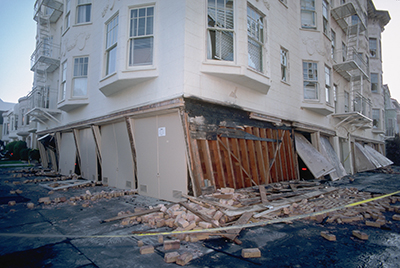

M|O Perspectives
Check back here for our thoughts on the latest developments in our industry.
City of San Jose, California to Require Seismic Retrofit of Wood-framed, Soft-story Structures
Oct 17, 2024
Thirty-five years ago today, on October 17, 1989, at 5:04 p.m. local time, the Loma Prieta earthquake occurred at the Central Coast of California/San Francisco Bay area. Caused by a slip along the San Andreas Fault, the quake lasted 10–15 seconds and measured 6.9 on the Richter Scale. The quake killed 63 people throughout northern California, injured 3,757, caused $6 billion in property damage, and left thousands of people homeless. It was the strongest earthquake to hit the area since the San Francisco earthquake of 1906. Several cities in the Bay area and beyond have passed safety ordinances related to issues identified from this disaster.

Addressing San Jose’s “soft story” problem
The likelihood that the City of San Jose will experience an earthquake of magnitude 6.0 or greater in the next 30 years is estimated to be 70%. As recently as October 25, 2022, its Alum Rock district experienced a 5.1 magnitude earthquake. At the advent of the Loma Prieta Earthquake’s 35th anniversary, the City of San Jose has passed a mandatory retrofit ordinance that will go into effect April 2025. It will address a building configuration issue exposed during the 1989 seismic event, when several multi-unit, wood-framed, soft-story buildings in the Marina district of San Francisco either collapsed or were heavily damaged.
A soft story occurs when one floor is significantly weaker laterally than the floors above it. This condition is common in multi-unit, wood-framed buildings, built in the 1980s or earlier, where the first floor has large open space for parking or retail. These buildings have a history of large losses and have even collapsed in previous earthquakes.
The City of San Jose estimates that up to 3,500 buildings, containing about 25,000 housing units, include a soft story. It intends to promote public safety through a mandatory seismic retrofit program to reduce earthquake-related injuries, facilitate post-earthquake emergency response, and reduce economic impacts. We can note here, too, that a few other cities in California including San Francisco, Oakland, Los Angeles, and West Hollywood have already passed similar ordinances.
What buildings are affected?
Included in the “Mandatory Seismic Retrofit of Wood-Frame Target Story Residential Buildings” program are wood-framed buildings constructed or permitted before January 1, 1990, or designed based on the 1985 or earlier edition of the Uniform Building Code. Subject buildings contain two or more stories, three or more Dwelling Units, and have a soft story or “target story.”
The owners of the subject buildings will be notified by the city and assigned to a group based on the age of construction.
- Group 1: A subject building built before January 1, 1978, containing five (5) or more Dwelling Units, and not assigned to Groups 2 or 3.
- Group 2: A subject building built after January 1, 1978, and before January 1, 1990, containing five (5) or more Dwelling Units, and not assigned to Group 1.
- Group 3: A subject building built before January 1, 1990, containing three (3) or more Dwelling Units, and not assigned to Group 1 or Group 2.
What should I do if I have a subject building?
Screening: The first step of the program is a screening phase. Owners with subject buildings in Groups 1, 2, and 3 must complete a screening form by October 26, 2026. Owners can either complete and submit the screening form themselves, and agree to seismically retrofit their building, or hire a California Licensed Professional (an architect, civil engineer, or structural engineer) to verify whether their building requires a seismic retrofit or is exempt.
Retrofit Construction: The next step is completing the seismic retrofit construction by the completion dates below:

For additional information, click here for a draft of the City’s ordinance.
If you have any concerns about your wood-framed building or questions about how the upcoming ordinance will affect your property, Marx|Okubo can assist you in navigating the process and making the most informed decisions. Please contact Jonathan Buhangin, PE, Associate (jonathan_buhangin@marxokubo.com), with any questions.

What we do.
- Owner's Representation
- Property Condition Assessment
- Project Management
- Constructability Reviews
- Repair | Reconstruction
- Facility Condition Assessment
- Construction Loan Monitoring
- Accessibility
- Building Enclosure
- Fire | Life Safety
- Mechanical | Electrical | Plumbing
- ESG | Sustainability & Resiliency
- Structural Engineering
- ASAP® - Automated Structure Alert Program
Marx|Okubo is a national architecture/engineering/construction consulting firm that works with real estate owners, investors and lenders—at every point of the property lifecycle—to evaluate their building projects, solve complex challenges and implement tailored solutions. We help clients understand their projects’ complexities, so they can make more informed decisions and, ultimately, mitigate their risk.




